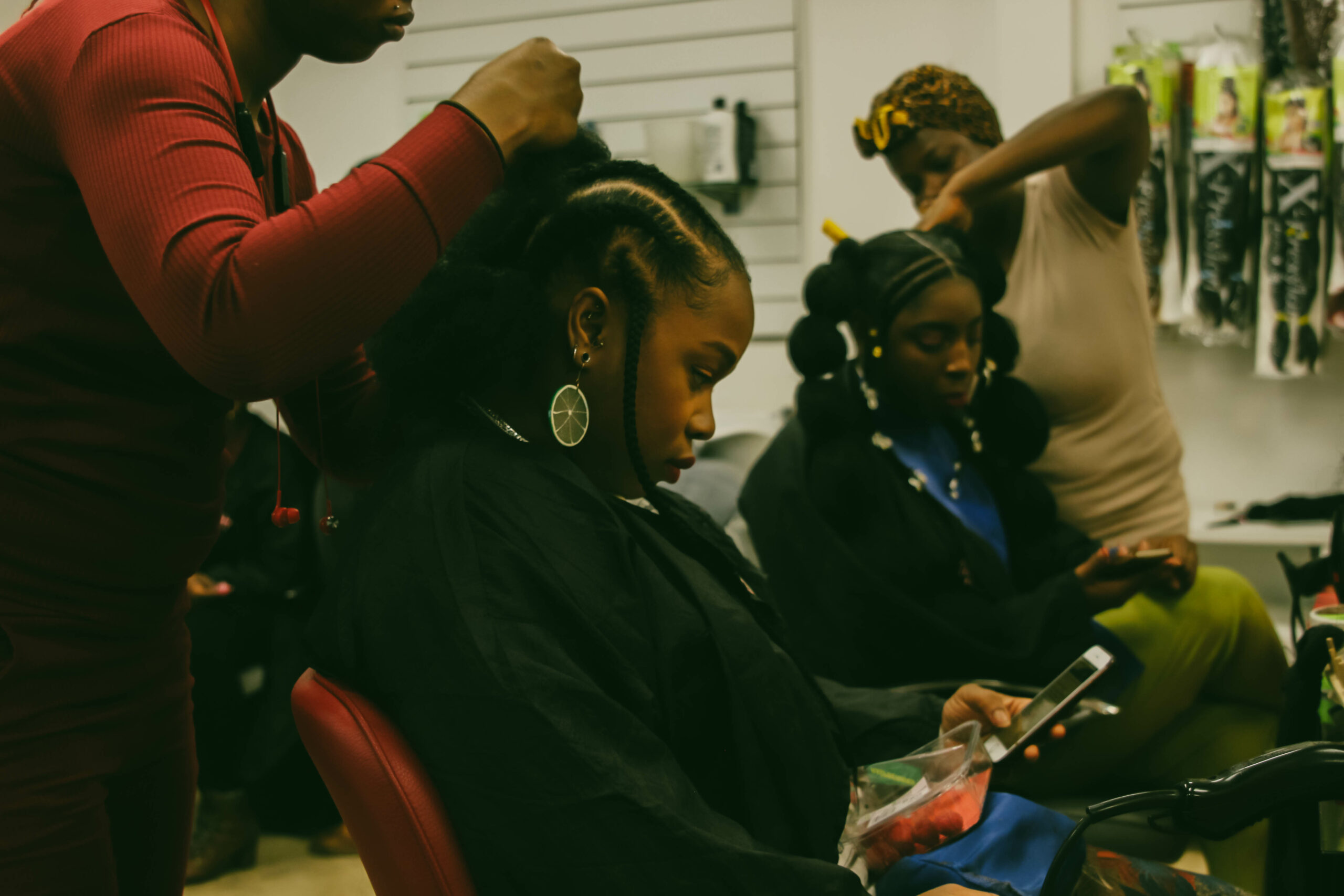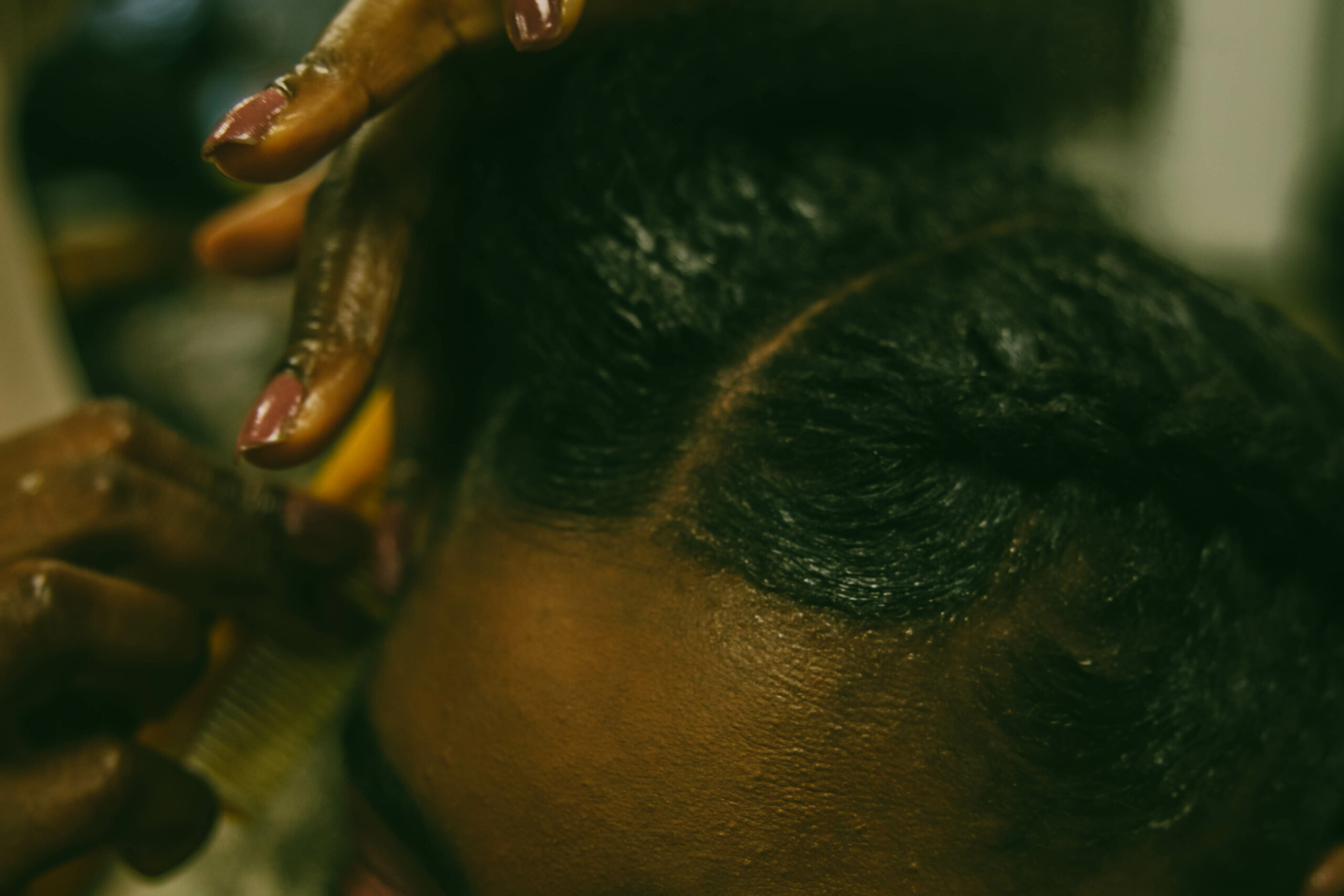
Image by Parys Gardener
The natural hair movement has reached an all-time high on many levels: the increase in women going natural has served as a powerful educational tool for black girls, and recent afro hair campaigns have succeeded in tackling the lack of representation for afro hair in the media. Naturally, when the opportunity to attend a natural hair panel discussion arose a few months back, I registered my interest very quickly as I knew it would be a valuable experience.
The panel discussion led by industry experts covered a wide variety of topics such as transitioning practices and more interestingly the effect of misogynoir on our hair choices. A good fraction of the talk concentrated on the #afrovisibility campaign– a campaign that challenges the lack of afro- textured and curly hair featured in billboard advertising.
As one of four women sporting a wig or weave amongst dozens of people with perfectly shaped, healthy fros, I immediately noticed how reluctant the group was in acknowledging the practice of wearing weaves and wigs as a method of choice and self-expression. Comments like “women wear weaves to fit into mainstream white culture” or “women wear weaves because they are uncomfortable with their natural hair” seemed to be popular amongst the group.
I always looked forward to seeing what my aunt’s next hairstyle would be. She switched between styles very often…
Growing up, I’ve always admired the variety of hairstyles achievable with black hair. I was fascinated by how my sister would braid my grandma’s natural hair and within hours my grandma would have her signature eight-inch curly hairdo. I always looked forward to seeing what my aunt’s next hairstyle would be. She switched between styles very often: one-week Senegalese twists, the next week a sleek ponytail. Irrespective of why these women chose to do certain hairstyles, I loved that it was out of choice.
Hair (whether natural hair, a wig or a weave) forms a part of individual experimentations with fashions and changing styles. It’s the only physical component that we can temporarily change before growing it back to its normal state and your hairstyle preference is no different to and shouldn’t be any different to having a preference for loafer shoes instead of ballerinas.
But with the long-standing history behind black hair, our hairstyles are hardly ever just about choice. An article on the Natural Haircare News blog titled “The Black Power Movements’ Influence on the “Natural Hair Movement” indicates that ever since the 1960s, natural hair has always been a fundamental tool of the Black Power Movement which grew out of the Civil Rights Movement.
It’s the only physical component that we can temporarily change before growing it back to its normal state
Rather than being a simple expression of style, natural hair developed into a revolutionary political statement symbolising blackness and challenging mainstream standards regarding not only hair but the rejection of societal norms.
In different circumstances, straightening your hair meant one of two things: either you were trying to assimilate into Eurocentric society or you were ashamed of your black heritage.
Almost 60 years after the movement, not much has changed other than the prevalence of weaves and wigs as an alternative to straightening or chemically treating black hair to achieve longer hair. Women with natural hair continue to normalise natural hair in places in which it wasn’t previously seen and women that alter their hair are still subjected to doing so seemingly out of “self-loathing” and to fit into European beauty standards.
Black hair, whether natural, straightened or weaved, has always been more complex than just a hairstyle and has always conveyed an unspoken message within the black hair community: either I stand with you by wearing out my natural hair or I stand against you by wearing weaves or wigs. It’s not enough to wear a hairstyle simply out of choice.
As a devoted wig-wearer and a former weave-wearer, I get asked a lot of the time why I hardly ever have my natural hair out. My first point of admission is to offer an easy-to-understand guide on the structure of black hair. Black hair has a wide-range of textures ranging from type three hair characterised by loose curls to type four hair distinguished by tight coils.
Regardless of where your hair pattern lies in the typing system, black hair is typically fragile and dry because the curls in the hair strands hinder the scalp’s natural oils from reaching the ends of black hair. Protective hairstyles such as twists and braids are very effective in preventing hair from losing too much oil and moisture. Getting weave may not be as effective – because of the added pressure from sewing tracks onto the braids — but it still serves as a good protective style if done properly.
Some people opt for weaves and wigs because of convenience; it requires less maintenance and less manipulation. Which is why it comes as no surprise that people of other ethnicities are now enjoying the versatility of hair weaves and wigs.
So, the question now is why do “we” wear weaves and wigs as opposed to why do black women specifically wear weaves and wigs? And the answer is pretty simple: because we can. But unfortunately, the natural hair movement sometimes fails to recognise how having a choice influences our hairstyles by focusing too much on hair politics.
Their means of challenging mainstream standards regarding hair can cause discomfort amongst women that alter their hair, creating almost a social divide between those that decide to be natural and those who do not — especially when comments suggesting black women ‘struggle with their blackness’ is thrown into the battleground.
Black hair is renowned for its captivating styles and its long-standing history
Look a little closer into the natural hair movement and you’ll notice the over idolisation of curlier textures causing marginalisation of kinkier textures. Dig a little deeper, and you will see that the front runners of the natural hair movement are often light-skinned or of mixed heritage, or are women that go through great lengths to manipulate their natural curl pattern in order to achieve a much looser curl pattern. But is that the doing of the natural hair movement? Is that the doing of the black hair community? Or is that the doing of mainstream media?
Whether you decide to wear your natural hair out or you decide to alter your hair with weaves and wigs, having a wide range of styles to choose from should be celebrated rather than condemned. Black hair is renowned for its captivating styles and its long-standing history and we as black women regardless of hairstyle preference should be proud of the position it holds in our culture.
If there’s one message to take away from this it should be that choosing a hairstyle shouldn’t have to cause a divide amongst the black community and shouldn’t have to make others feel uncomfortable or out of place. Because a hairstyle is nothing more than a hairstyle and a hairstyle is nothing more than a form of self-expression.









